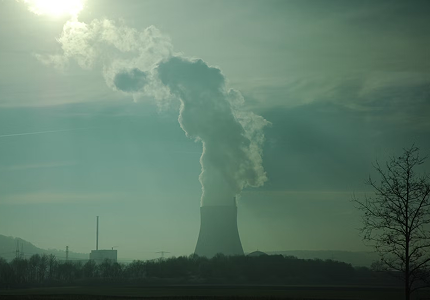Separating fact from fiction
It’s no secret that nuclear energy often evokes fear. And when one thinks of chilling scenarios, few surpass the Chernobyl accident of 1986.
Without doubt, it was the worst nuclear reactor accident. Yet it was also a tragedy that could only have occurred under the specific circumstances of the Cold War-era Soviet Union (we’ll explain the specific reasons for this in an upcoming article—stay tuned!). At that time, reactors in the rest of the world already featured significantly more robust safety systems.
Still, if we take a step back and consider the overall safety record of nuclear reactors worldwide, I believe the actual fatality numbers might surprise you.
How risky is it to live near a nuclear power plant?
To properly assess the situation, let’s first clarify some key concepts and definitions.
How is nuclear reactor safety measured?
One of the key metrics used to assess nuclear reactor safety is the Core Damage Frequency (CDF). This metric reflects the annual probability of a reactor experiencing a severe accident that results in core meltdown.
Why is this important? Because core damage accidents can potentially result in radioactive releases to the environment, posing health risks to nearby populations.
Nuclear reactor worldwide are aging
As mentioned in a previous article, the peak of global nuclear plant construction occurred in the 1970s, followed by a sharp decline, as shown in Figure 1. As a consequence, most of the currently operating nuclear reactors were built before 1990. That means the majority of them are over 35 years old.

What has happened to CDF over time?
From its inception, the nuclear industry has undergone continuous improvement — not only in plant operation (as evidenced by improved capacity factors), but also in safety standards.
Reactors of Generation III and III+ (built in the 1990s and post-2000) are 10 to 100 times safer than Generation II designs (typical of the 1970s and 1980s). This significant safety improvement is shown in Figure 2.

In practical terms, if all currently operating reactors were replaced with modern designs, the expected frequency of serious nuclear accidents would drop to well below one every 100 years.
The comparison you’ve been waiting for
When comparing fatalities per unit of energy produced (see Figure 3), nuclear power is several orders of magnitude safer than fossil fuels. Surprisingly, it is also safer than some green energy sources that are commonly perceived as risk-free.

It’s important to note that these statistics already include the three major nuclear accidents (Three Mile Island, Chernobyl, and Fukushima) and account for older-generation plants. As new reactors—particularly Generation III and III+—become more widespread, these numbers are only expected to improve.
It’s also worth mentioning that many older reactors have been retrofitted with safety upgrades that reduce their CDFs compared to when they were originally built, although they still cannot match the performance of modern designs.
But what about the accidents themselves?
That’s a question we’ll tackle in a forthcoming article, where we’ll examine the three most significant nuclear accidents—Three Mile Island, Chernobyl, and Fukushima—their consequences, and why some of the controversies surrounding them persist to this day.
Stay tuned for future updates!

